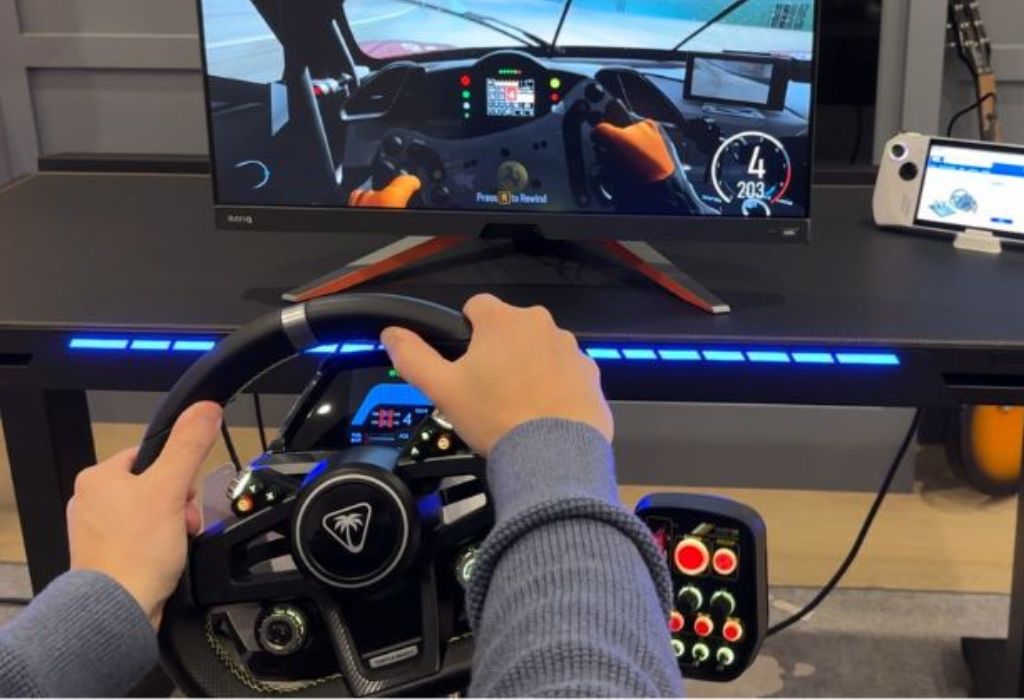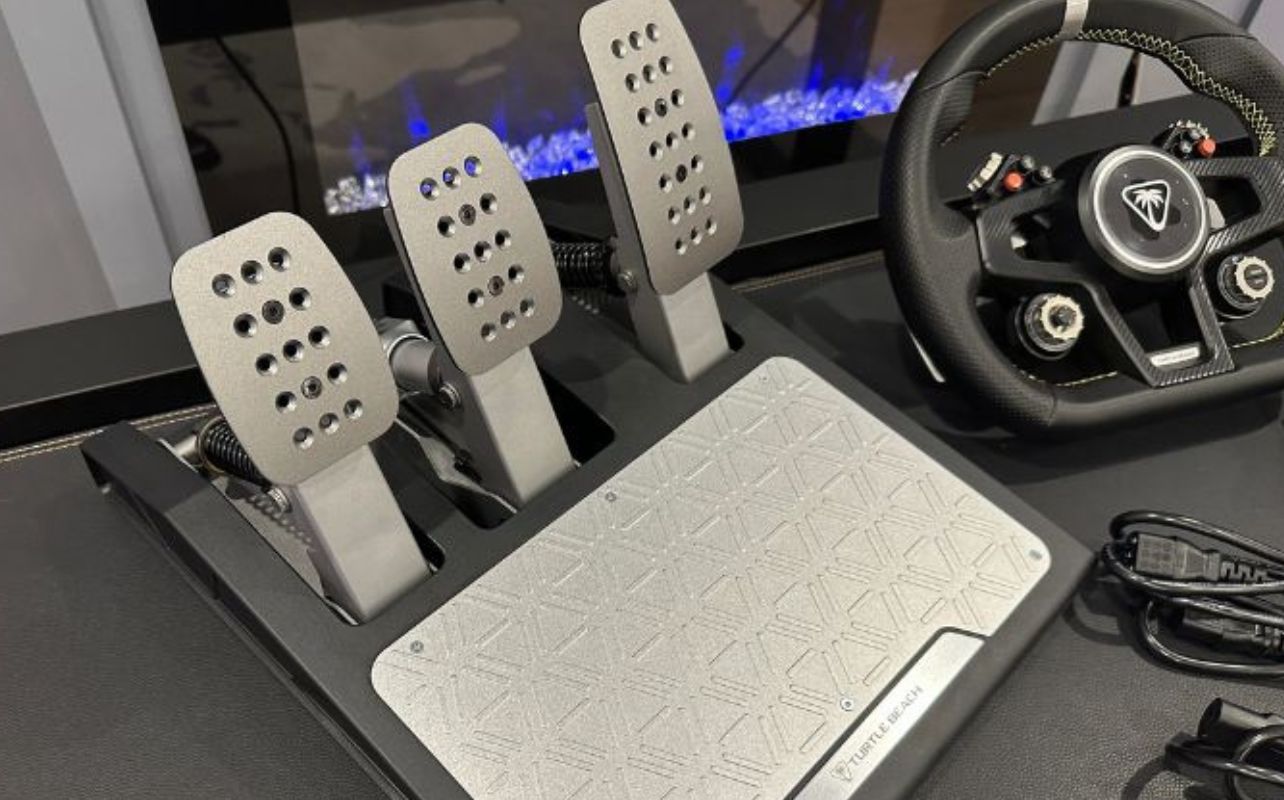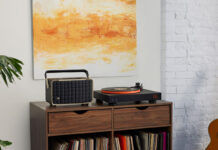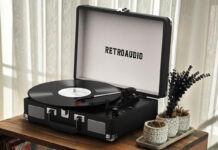
Sim racing video games have shifted into high gear, and the proper racing rig will help you get the most out of the experience. Thanks to the rise of advanced gaming hardware and realistic games, you can now bring the thrill of motorsport right into your home. Whether shaving time off your best lap in Gran Turismo 7, chasing the podium in F1 25 or exploring open roads in Forza Horizon 5, building your own racing simulator setup has never been easier.
This racing simulator setup guide walks you through everything you need to know, from choosing essential gear and optimizing your space to setting a realistic budget and exploring upgrade paths. The best part is that you don’t need to spend thousands of dollars to get started. Sim racing is modular and scalable, meaning you can build your dream rig one piece at a time. Let’s line up at the starting line and take the first steps to getting the best track virtual racing experience.
Step 1 – Decide where you’ll race
Before buying any gear, it’s essential to decide where your racing simulator will be located. The space you have available will determine which setup works best for you.
Versatile options for a smaller space
If you’re limited on space, a simple desk setup might be the ideal starting point. You can attach your racing wheel directly to your desk and pack it away easily when you’re finished playing. As a console player, I prefer the living room to do most of my racing. In this scenario, a foldable wheel stand can be stored out of sight when not in use.
Fold and store solutions
If you share your play area with others, you might want to look into portable or folding gear, such as the Next Level Racing Wheel Stand Lite, which offers solid stability but folds and stores quickly when you’re done racing.
A large, dedicated racing space
If you have a spare room or a dedicated gaming area, a full cockpit setup is worth considering. It offers greater comfort, better ergonomics, and a much more immersive driving experience. Whatever you choose, it’s essential to measure your space carefully. Pay attention to details like wheel height, pedal distance, and monitor placement to ensure everything feels natural and comfortable during long sessions.

Step 2 – Pick the right racing wheel and pedals
Your racing wheel and pedals form the heart of your sim setup. They are the key components that determine how realistic your driving experience will feel and how precisely you can control your virtual vehicle.
Selecting the proper racing wheel
For beginners, entry-level options like the Logitech G920 offer excellent value. These wheels are durable, affordable, and provide authentic force feedback that helps you feel the car’s grip and weight as you corner and brake.
If you’re ready to take your setup to the next level, mid-tier options like the Thrustmaster T128 strike a great balance between price and performance. They deliver stronger and smoother force feedback, along with modular designs that allow you to upgrade parts such as wheels, pedals, and accessories over time.
For those who want professional-grade realism, wheels like the Logitech G RS50 3-Piece Sim Racing Steering Wheel System and the Thrustmaster T598 offer unmatched precision and torque. These are the types of systems that get you one of the most authentic on-track experiences, though they come at a higher cost.

Pedal to the metal
Pedals are just as important as the wheel. Entry-level sets typically use spring mechanisms to measure braking pressure, while more advanced load cell pedals respond to the actual force you apply, mimicking the feel of a real car’s braking system. Once you’ve developed a feel for racing, upgrading your pedals can dramatically improve lap times and consistency.
If you’re a fan of drifting or rally racing, you might also consider adding a gear shifter or handbrake to your setup for a greater sense of control and realism.
Step 3 – Choose a mounting solution or cockpit rig
How you mount your wheel and pedals can make a huge difference in stability, comfort and storage. A wobbly setup can completely break immersion, so it’s essential to think about how to place and mount your gear.
The simplest and most affordable option is desk clamps, which work well for casual racers looking to get started quickly. Some models have these included, or are build into their housing. For something more stable, wheel stands provide a sturdier foundation while remaining portable and easy to store.
If you plan to spend hours on track, a cockpit with an integrated seat delivers a major upgrade in comfort and realism. These rigs keep your wheel, pedals, and seat firmly aligned, creating a consistent and comfortable driving position. At the top end, full motion rigs take immersion to another level by adding seat movement, vibration, and integrated monitor mounts to replicate the sensations of driving on a real track.

Step 4 – Displays, audio, and accessories
A proper sim rig deserves great visuals and sound to push the experience over the top. The display you choose affects how immersive and responsive your racing feels. Gaming monitors with high refresh rates and low latency offer smoother performance and quicker reactions, perfect for competitive racers. Ultrawide setups provide a panoramic field of view that wraps around you, making it easier to judge corners and spot opponents.
Virtual reality racing
For the most immersive experience possible, virtual reality headsets such as the Meta Quest 3 or PS VR2 place you directly inside the car. You can glance naturally into turns, check mirrors, and feel fully surrounded by the race environment.
Sounds of the track
Audio plays an equally vital role. A high-quality gaming headset provides clear positional audio, letting you hear tire squeals, engine revs, and rival cars approaching. External speaker setups can fill your space with rich sound, creating a cinematic experience, while tactile devices like bass shakers mounted under your seat or pedals can replicate the engine’s vibrations and the texture of the track.
Step 5 – Budgeting your build
Sim racing can fit into almost any budget, and the hobby’s modular nature means you can start small and upgrade as you go. A starter setup typically costs between $300 and $500 and usually includes an entry-level wheel and pedal set attached to a desk mount or simple wheel stand.
Mid-range set-up racing budget
A mid-range build, priced between $800 and $1,500, can include a stronger force-feedback wheel, a dedicated cockpit rig, and upgraded pedals for greater precision and comfort.
The premium race experience
At the premium level, typically $2,000 and up, you’ll find direct drive wheels, load cell pedals, full cockpit frames, motion platforms, and monitor mounts designed to deliver a professional-grade racing experience.
Build a dream racing rig piece by piece
You don’t need to commit to a top-tier setup right away. Many racers start with basic gear and gradually upgrade as they continue their virtual motorsport career. Keeping an eye on bundle deals or seasonal sales, especially during events like Black Friday at Best Buy, can help you get more value for your money.
Assembly and setup tips
Once you have all your gear, take your time with the assembly process. Ergonomics make a huge difference in how comfortable and enjoyable your setup will be. Adjust your seat height, wheel distance, and pedal angle until everything feels natural. It’s also smart to plan for upgrades in advance. Leave space for a gear shifter, larger monitor, or additional accessories down the road. If your setup is in a shared area or on hardwood floors, consider using anti-fatigue mats or noise-dampening pads to minimize vibrations and protect your flooring.
Getting the most out of your racing simulator setup
Building your own racing simulator setup is one of the most enjoyable and rewarding projects for any gaming or motorsport enthusiast. It allows you to create a driving experience tailored to your personal goals, available space, and budget. Whether you begin with a simple wheel stand or a full cockpit rig, the beauty of sim racing lies in its flexibility and scalability. As you refine your setup and improve your skills, you’ll find that sim racing offers not just entertainment, but also a connection to the thrill of motorsports.
To get on the starting line, check out Best Buy Canada’s selection of sim racing gear and begin building your ultimate driving experience today.





